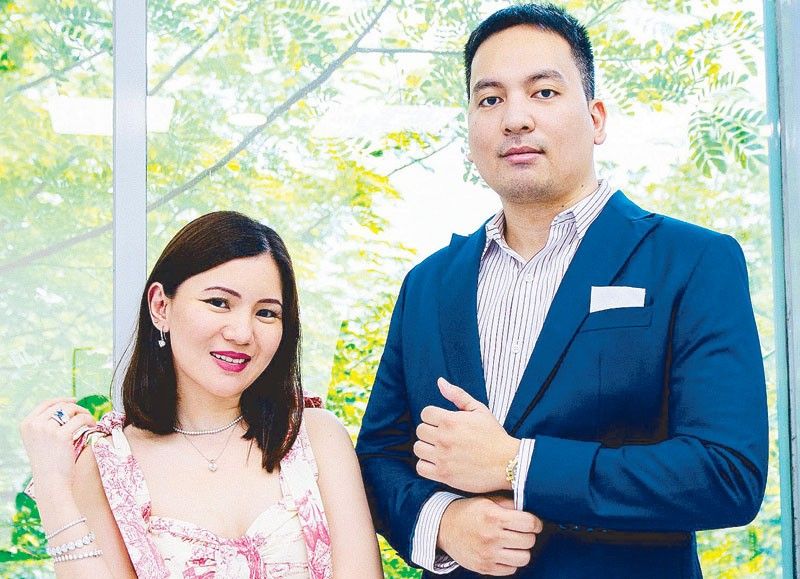The abcDs of Diamonds

In 2011, Carl Fider started his jewelry company, which he named Tessera. His company started with monogrammed and custom-made necklaces before he shifted to the retailing and selling of wholesale diamonds. What started out as a hobby has now grown into a full-blown business.
“I started small. I started from almost nowhere,” shares Carl. I opened my own factory in Bulacan — I traveled a bit to Hong Kong, to Belgium — met a few diamond dealers over there and did tie-ups with them to expand my business in the Philippines. We carry natural mined and certified diamonds from 0.30 up to 10 carats — proud to say that we are one of the leading manufacturers and jewelry retailers here in the Philippines. Our brand has a vast variety of diamonds, which give our clients complete freedom to enjoy the experience of choosing a stone that represents themselves best.”
According to Carl, rock diamonds primarily come from two places: Russia or South Africa. But there are manufacturers with factories in India and Belgium as well. Carl shares that the diamonds they sell are conflict-free and go through a rigorous process, including being graded internationally and being certified.
When I asked him when is the best time to sell diamonds, Carl’s quick reply was, “Usually, you don’t sell diamonds — you buy them and you keep them. When you collect diamonds, you look at them as a collection for yourself. I love diamonds and I would not sell diamonds that I personally bought. You know, upgrading diamonds is a completely different story. If you want to upgrade diamonds, you can always come back to us and we’ll be happy to assess and give you a fair deal for your stones.”
Determining whether a diamond is real or fake comes pretty naturally — if you are used to seeing them every day. It’s not pretty perfect but every diamond really stands out on its own — depending on its quality. But usually, diamonds that are really white and perfect are fake. His suggestion is that you buy only diamonds with an original certificate from an international grading agency. Don’t buy the cheapest deal. Diamonds are not cheap; if it is, then there’s something seriously wrong with it. Make sure that you buy it from a reputable diamond dealer, with an original certificate, and make sure to check the inscription on the stone. These are basic things that you need to do to ensure value in your stones.

Let’s hear from the expert the 10 things one should know about diamonds:
1. Don’t always go for the biggest diamond; go for quality. Diamonds with higher color or higher clarity always hold value. It doesn’t always mean that if you buy higher carats that it’s the best thing to wear. Quality matters.
2. 4Cs – Carat, Cut, Color and Clarity. All diamonds have different quality grades that establish their value. Carat actually denotes the weight of the diamond — NOT the size. Cut is determined by how a diamond’s facets interact with light — the most popular cut is the Round Brilliant Cut and it’s said to be the most brilliant out of all the diamond cuts.
Color refers to the natural tint inherent in white diamonds — with D being the whitest or colorless.
Clarity is a measure of the purity and rarity of the stone — IF is the highest clarity, meaning “Internally Flawless.” You will be able to see almost no inclusion.
3. Fancies or fancy cuts (e.g. heart, pear, oval, etc.) are cheaper than rounds in terms of prices. A lot of customers like to buy different kind of shapes now. Rounds are more popular so they are in demand. Fancy shapes have less facets, so the brilliance is less than the round. Because there is less demand for fancy shapes, they are cheaper.
4. Matching pairs are relatively more expensive than single stones — it’s a little more complex selecting well-matched diamonds since both diamonds should almost be similar if you want your diamonds to blend well together.
5. Diamonds are forever but it is possible to crack one only a diamond can cut another diamond. Always take care of your diamonds by regularly cleaning them.
6. If there are inclusions in a diamond, that means it is real. An inclusion doesn’t mean there is something wrong with the diamond. The black inclusion in the diamond is carbon — it is natural and what makes every diamond unique and special.

7. Diamonds come in all colors pink, white, yellow, black, blue, orange, etc. The deeper the color, the more expensive, but it’s a different story for black and brown diamonds.
8. Certification and laser inscription all certified diamonds have a laser inscription that can be most often seen on the stone’s girdle. This is a combination of letters and numbers and often paired with a certificate — proof that your diamond is natural, mined and real.
9. The more cuts in the diamond, the more sparkly, like rounds and ovals.
10. If you see a super-cheap deal, then something is wrong. Diamonds are not cheap. If you are on a budget, there is always something for someone. If it’s too good to be true, then it is probably too good to be true.
(We welcome your suggestions and comments. Please e-mail me at [email protected]. Follow me on Instagram @monsromulo.)
- Latest




























